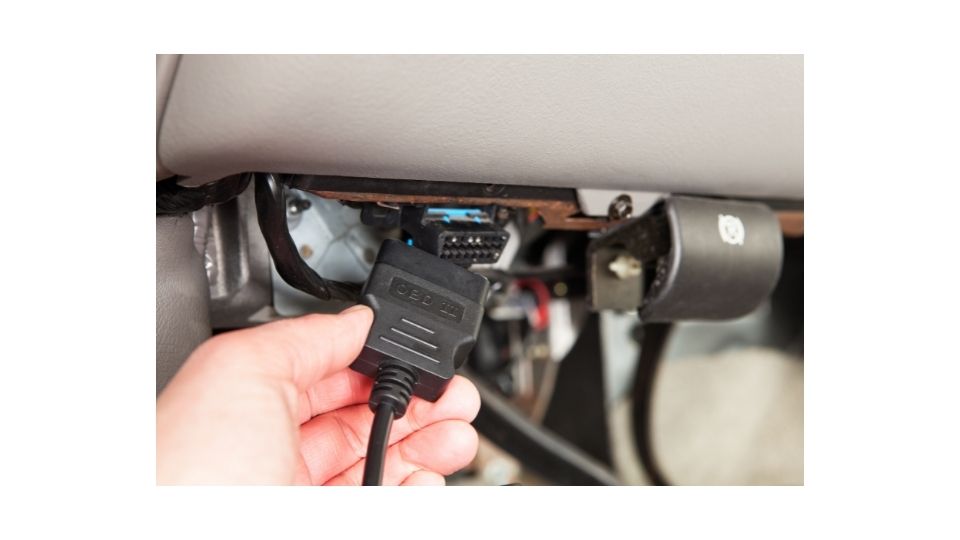Key Points to Highlight:
- The P1133 trouble code indicates a problem with the bank 1 sensor 1 oxygen sensor’s ability to switch between rich and lean. This sensor is important for monitoring exhaust output and adjusting the air/fuel mixture for efficiency and pollution control.
- Common symptoms of a P1133 trouble code include illuminated Check Engine Light, rough running or reduced power, difficulty starting, and engine stalling at random times.
- Potential causes of a Chevy P1133 code include a faulty or damaged oxygen sensor, issues with the PCM, leaky or clogged catalytic converter, open circuit in heater element, or clogged fuel injectors.
- There are several solutions to address a P1133 code, which involve checking for vacuum leaks, exhaust leaks, fuel pressure regulator and MAP sensor voltage, inspecting vacuum hoses and EGR valve, and leveraging an OBD-II scanner for diagnostics.
The P1133 trouble code is a generic code that applies to all vehicles newer than 1996. It means the powertrain control module (PCM) has detected a problem with the bank 1 sensor 1 oxygen sensor’s ability to switch from rich to lean and back again. The PCM uses this sensor to monitor the exhaust output.

In an efficient engine, the oxygen level in the exhaust should be very low. As the engine wears, it becomes less efficient and produces higher levels of unburned fuel, which raises the oxygen content in the exhaust.
The PCM uses this information to adjust the air/fuel mixture so that it remains as efficient and pollution-free as possible. When this code appears, it means that the sensor has stopped switching between rich and lean correctly.
What does P1133 code mean on a Chevy?

In short, The Chevrolet engine code p1133 means that the oxygen sensor has detected that the air to fuel ratio is too lean. This is a problem because it can cause the engine to shut down or not start at all.
The p1133 code is a problem with the oxygen sensors. They have detected an issue with the air to fuel ratio, which is what causes this code to appear on the dashboard of your car. If you see this code, then you need to take action immediately.
The oxygen sensor needs replacing and if you don’t do it now then your car will not start at all or it will shut down while you’re driving! This means that there’s no way for you to know when something bad happens until after it does happen which could be very dangerous for anyone inside of your vehicle including yourself.
What are the symptoms of P1133?
The symptoms of a P1133 trouble code being stored in your vehicle’s computer may vary depending on the vehicle but are often similar between different makes and models. Here are some of the most common symptoms of a P1133 trouble code:
- Check Engine Light will illuminate.
- Your vehicle may run rough or have reduced power.
- It may have difficulty starting.
- Your engine may stall at random times.
- Possible Causes of a P1133 Trouble Code.
If you see any of these symptoms while in your car, it’s time to get this problem fixed.
What causes Chevy P1133 code?
The Chevy P1133 trouble code is set when the Powertrain Control Module (PCM) detects a lack of switching from the upstream oxygen sensor in Bank 1, in front of the catalytic converter.
This trouble code will illuminate the Check Engine Light, and may cause poor fuel economy and/or engine performance. The P1133 code is usually triggered due to a faulty or damaged O2 sensor, but it can also be caused by other issues.
Below is a list of common causes for your Chevy P1133 code:
- Faulty O2 Sensor: The Lambda sensor may have failed, which would cause this trouble code.
- Faulty PCM: The PCM may have failed or have a software malfunction, causing the code to be stored.
- Leaky or Clogged Catalytic Converter: If the catalytic converter isn’t working properly, it could cause this trouble code to be stored.
- Open Circuit in Heater Element: If there is an open circuit in the oxygen sensor’s heater element, this trouble code will be stored.
- Clogged Fuel Injectors: A clogged injector could cause a lean condition and trigger this trouble code.
What are the Possible Solutions to the P1133 Code?
The P1133 code means that the engine computer has detected a problem with the oxygen sensor circuit for bank one sensor one. The PCM monitors the voltage of this sensor and compares it to the voltage of bank one sensor two. If there is a difference between these two sensors, then a P1133 will be stored and a check engine light will be illuminated.
The oxygen sensors are not cheap and they are not easy to replace on many vehicles. But before you replace them, there are a few things you can try:
- Check for vacuum leaks: A vacuum leak can cause lean conditions which could trigger this code. These leaks can be hard to find, so use a smoke machine if you have access to one.
- Check for exhaust leaks before or after the oxygen sensors: An exhaust leak can also cause lean codes and can damage the front oxygen sensors as well as the catalytic converter.
- Use an OBD-II scanner to see if this code has been cleared from memory: If it comes back with no other codes, then you may have an intermittent problem that is difficult to diagnose without more information.
- Check the fuel pressure regulator and fuel pressure with a fuel pressure gauge: If the fuel pressure is too high, this could be a bad injector or a faulty regulator.
- Check MAP sensor voltage: It should read 1.2 volts with the engine off and steady at 5 volts at idle and 3 to 4 volts on the wide-open throttle (WOT).
- Inspect vacuum hoses for leaks: A leak in any of these hoses will cause the engine to run rich since it will be unable to maintain a proper vacuum for EVAP control and EGR operation.
- Test the EGR valve for proper function and operation: The EGR valve must be closed under normal operating conditions and open when commanded by the computer.
You can also check out the video below that gives you a good representation of it.
In short, the presenter diagnoses and fixes a “Service ESC” issue on a Chevy Avalanche. He uses an OBDII scanner to retrieve error code P1133, which shows an insufficient switching oxygen sensor in bank 1 sensor 1. After analyzing live data from the oxygen sensors, he determined that bank 1 sensor 1 is stuck rich, leading to erroneous fuel trim readings. He then demonstrates how to remove and replace the faulty oxygen sensor, confirming the repair’s success through further testing with the OBDII scanner.
Conclusion
Basically, P1133 is just an indication of overall malfunctions for the injection system, and it doesn’t mean a specific problem. The possibilities of these P1133 codes are mainly the result of problems with sensors or the ECU itself. The best way to solve this issue is to get your car’s auto repair done by a reputable technician in your neighborhood.

Tomas is a retired Chevy Auto Technician that brings decades of hands-on experience and expertise to the table. He’s also a father to two incredible daughters. He enjoys using his knowledge and experience to help you solve and find reliable information on Chevrolet vehicles. Whether it’s troubleshooting engine problems or providing tips for maintenance, Thomas is committed to helping Chevy owners keep their vehicles running smoothly and safely.



